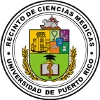The Center for Environmental and Toxicological Research was established at the Medical Sciences Campus under the Department of Biochemistry in the School of Medicine. The Center has participated and contributed with more than 20 Ms and Ph.D thesis projects associated with environmental issues on the island of Puerto Rico. It has graduated students from the School of Public Health, the School of Pharmacy, the School of Medicine, (Biomedical graduate program) and from the University of Puerto Rico, Rio Piedras Campus (intercampus graduate program). The Research of the Center focuses on two major environments Air and Water. Air pollution in the metropolitan area (Cataño), is being studied where we are characterizing toxic compounds adsorbed to particulate matter and establishing their genotoxic potential and measurement of toxicological responses using human bronchial epithelial cells BEAS-2B). It investigates the effects of airborne particulate matter arriving to Puerto Rico in African dust storms throughout the year. Its current findings have identified components that induce the secretion of pro inflammatory cytokines in human lung cells. It is investigating the various molecular mechanisms by which these components induce cell damage. Polymorphism of various cell receptors such as TLR-2, TLR-4 and CD14 are being investigated among Puerto Rican asthmatics and correlated to toxicological responses.
The second research area involves water pollution in estuaries of Puerto Rico, the San Juan Bay Estuary and other areas in Puerto Rico such as Jobos Bay and Vieques. Specific biomarkers in fish and crabs are being employed as indicators of xenobiotic exposure. These biomarkers are correlated with water and sediment and contaminants in the biota, in order to establish potential risk to the adjacent population that depend and consume seafood’s from these areas.
Contamination of lead in children has never been an environmental health issue in Puerto Rico. However, there has never been an extensive program that addresses this hypothesis. The Center initiated a study to evaluate levels of lead in blood from children in two areas of the island. The study focused on the analysis of these pollutants in blood of children from two communities, one identified to be close to environments containing high lead concentrations in sediments and another used as reference. In addition the Center also studied the bioaccessibility of five metals (including lead) from contaminated soils and sediments at a superfund designated site in Vega Baja. MS theses from the school of Public Health and could be found At the Medical sciences Library.
The Center is also involved in the isolation and identification of genes that are induced or inhibited by steroid drugs such as dexamethasone and rifampicin. In addition, we are interested on the effects of xenobiotic compounds particularly those that are found in air particles and which can regulate genes from the immune and detoxification systems. Two sets of genes being studied are the Major Hispocompatibility Complex Class II (MHCII) and associated genes CIITA (master regulator) and the Pregnane X Receptor (PXR) associated with detoxification enzymes such as CYP3A. How environmental insults can modulate these genes in lung cells and their relationship to cardiovascular diseases are also being explored.
